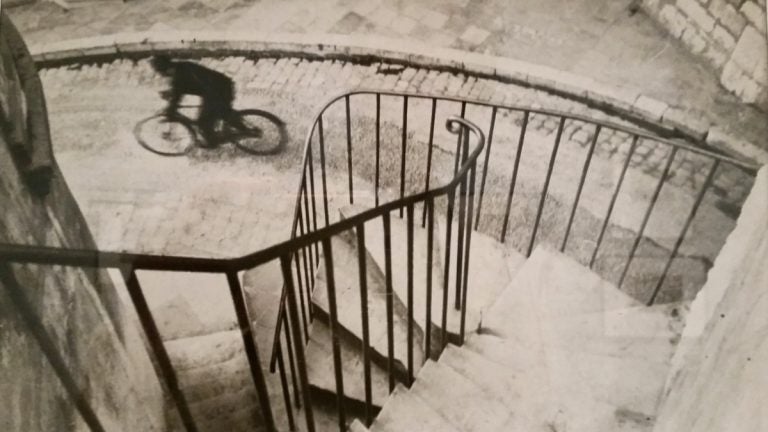Barnes photography exhibit reflects Paris of early 20th century, museum’s own collection
Listen
Henri Cartier-Bresson's "Hyeres
The Barnes Foundation is displaying a new exhibition of old photographs related to its renowned collection of impressionist paintings.
The museum’s galleries on the Parkway are filled with priceless paintings by Degas, Renoir, Matisse and other denizens of that heady time in Paris, in the late 19th and early 20th centuries, when artists began embracing an abstract way of looking.
At the same time, photography was finding its feet as an artistic medium.
“I would say the influence was mutual,” said Michael Mattis, a photo collector. “One of the pictures in the show that is the closest to the Barnes is by Degas, himself. Edgar Degas, the painter, in 1895 caught the camera bug. For 18 months, he drove everybody crazy by asking them at dinner parties and social events to pose for his camera.”
Mattis loaned 170 photos from his private collection to the Barnes for “Live and Life Will Give You Pictures,” the exhibit of French photography from 1890 to 1950. It includes vintage prints of the River Seine by moonlight; aging, bejeweled matrons in bistros; bustling streets scenes; and prostitutes in brothels.
“Brassaï — the greatest artist of Transylvania — he was a creature of the night,” said Mattis. “He would go to the seediest dives in Paris and photograph their inhabitants.”
The photographers were using ideas developed by painters of the time, often emphasizing lines and shapes as their friends — they were often friends — were doing with paint.
Henri Cartier-Bresson’s famous pictures of a speeding bicycle on a cobblestone street shows a winding stairway that would not have been out of place in a cubist painting.
Fashion photographer Ilse Bing shot clothing at such close range, the images are dominated by pattern and shape.
In terms of modernist aesthetics, photography lagged behind painting. With the development of paint in portable tubes, artists were able to work outside, en plein air, and capture life the way it is lived by common people: street life, lower-class labor, and middle-class leisure became fodder for images.
“The subjects that were so central to impressionists of modern life, they could not be captured in photography until the end of the 1890s,” said Barnes president Thom Collins, who curated this show. “It was only after the advent of Kodak and roll film in 1888 that it’s possible for photographers to capture fleeting face of modernity.”
Collins says this show of photography — a first for the Barnes — reflects the institution’s mission of advancing visual literacy.
WHYY is your source for fact-based, in-depth journalism and information. As a nonprofit organization, we rely on financial support from readers like you. Please give today.





